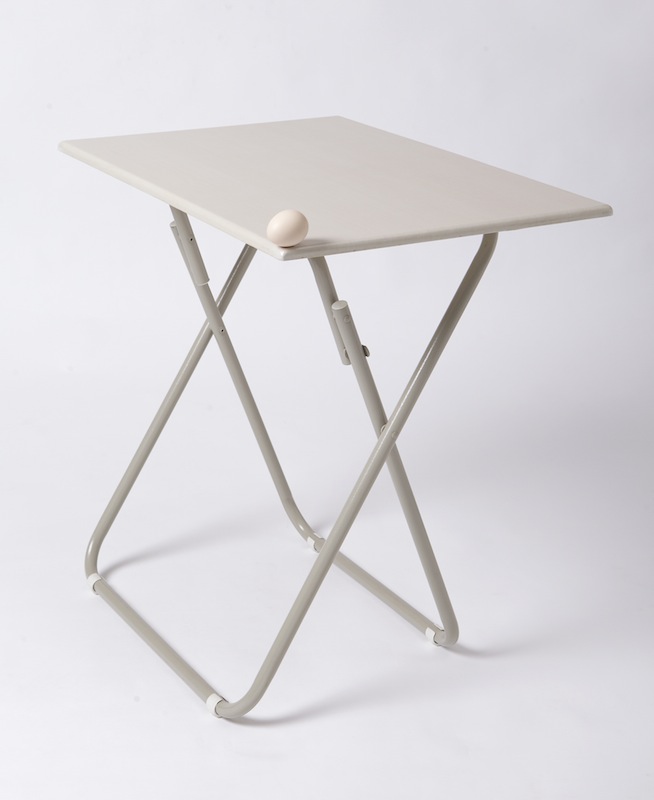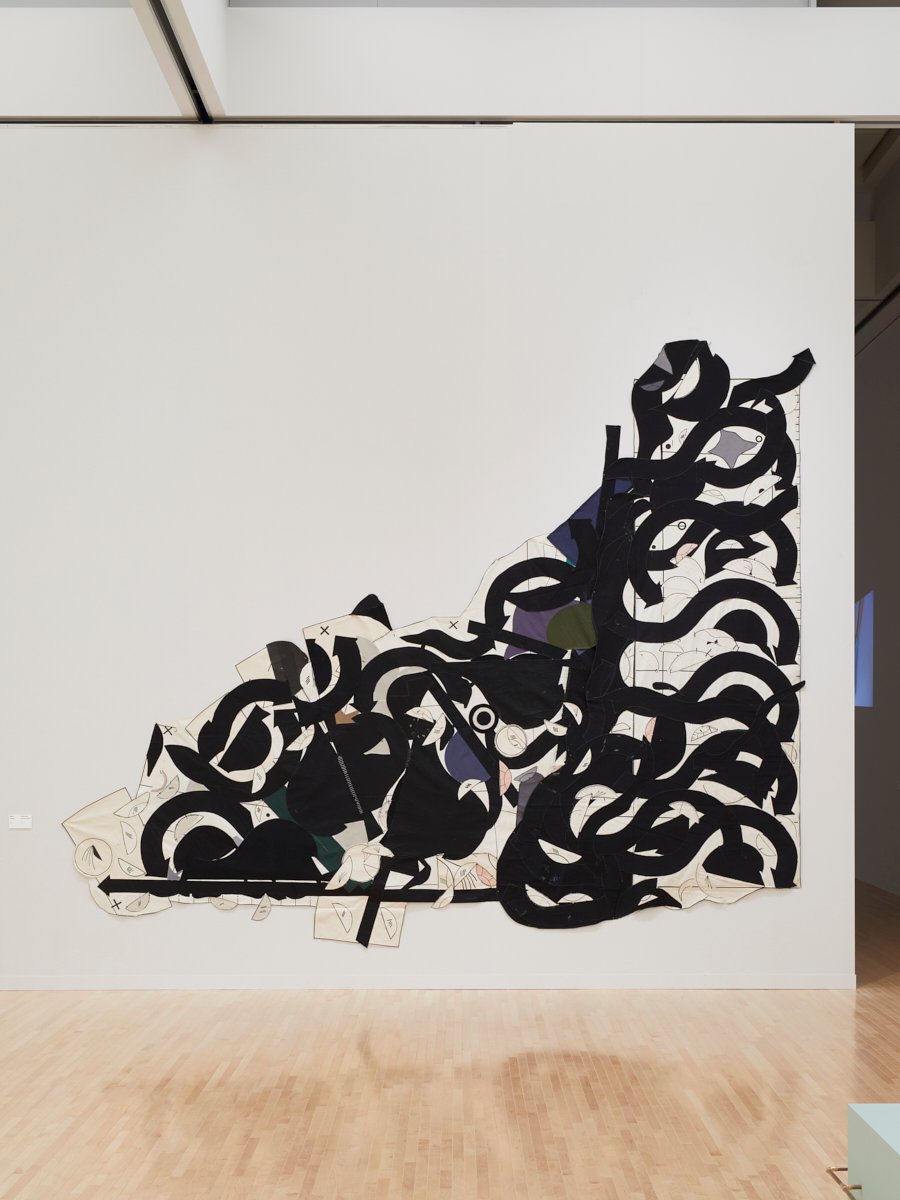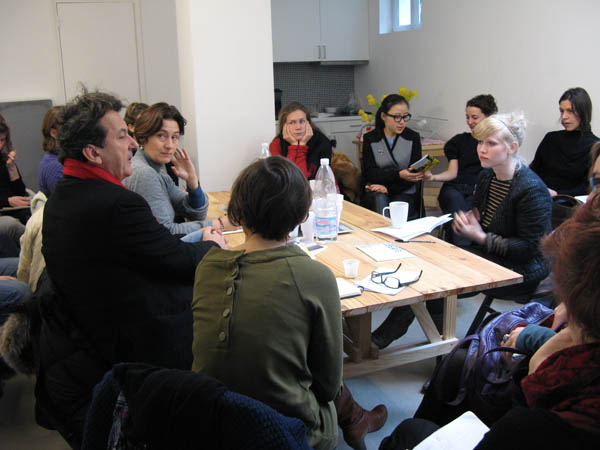
© » KADIST
Yin-Ju Chen
One Universe, One God, One Nation was inspired by Hannah Arendt’s analysis of space exploration and by the astrological horoscope of Chinese political and military leader Chiang Kai-shek (1887-1975). Chiang was born with the sun in Scorpio and at the Ninth House, moon in Aries, and ascendant in Capricorn, signifying an individual who is headstrong, intense, and persistent, with a desire for leadership. Yin-Ju juxtaposes images of outer space, war, and subservient masses, calling attention to how the dictator’s violence and charismatic power over the crowd was predicted by his particular astrology.

© » KADIST
Yin-Ju Chen
Extrastellar Evaluations is a multimedia installation produced during Yin-Ju Chen’s residency at Kadist San Francisco in the spring of 2016. Chen’s project departs from a 19th century theory popular within Western biogeography that posited the existence of a “lost land” or ancient continent called Lemuria that had sunk beneath the Indian and Pacific Ocean due to cataclysmic geological change. As a result, its inhabitants, the Lemurians, found refuge in Mount Shasta, California.

© » KADIST
Yin-Ju Chen
Through a semi-fictional approach, Extrastellar Evaluations envisions a version of history in which alien inhabitants, the Lemurians, lived among humans under the guise of various renowned conceptual and minimal artists in the 1960s (Carl Andre, Mel Bochner, and James Turrell to name a few). If humans interpreted and appropriated the geometric-shaped works they created as conceptual and minimalist artworks, the objects were in fact transmission devices the Lemurians used to report back on human actions to their mother planet. The video takes the form of a channeled message from Adama, High Priest and spiritual leader of the Lemurians.

© » KADIST
Wong Wai Yin
Drawn from the widely circulated images of protests around the world in support of women rights and racial equality, the phrase I can’t believe we are still protesting is both the title of Wong Wai Yin’s photographic series and a reference to similar messages seen on protest signages. The artist used found images from the internet, including a viral photo of an elderly woman who took part in the 2016 “Black Monday” strike against a proposed anti-abortion law in Poland, and another image taken the same year of a group of protestors in the United Kingdom, rallying for the Black Lives Matter movement. Drawing parallels with Hank Willis Thomas’s I Am a Man (2013) painting in the KADIST Collection, Wong employs the visual language and terminology of mass media, specifically borrowing images from protests on civil rights issues.

© » KADIST
Wong Wai Yin
In this work the artist stages a humorously violent “intervention” against male-dominated cultures of art production in present-day China. For this video, Wong accompanied six male friends from art school to a group show of their work titled “Inside Looking Out” at Osage Gallery in Beijing. Throughout her visit, she was rarely acknowledged for her own creative accomplishments and was more frequently introduced as an artist’s girlfriend, and often without name.

© » KADIST
Wong Wai Yin
Drawn from the widely circulated images of protests around the world in support of women rights and racial equality, the phrase I can’t believe we are still protesting is both the title of Wong Wai Yin’s photographic series and a reference to similar messages seen on protest signages. The artist used found images from the internet, including a viral photo of an elderly woman who took part in the 2016 “Black Monday” strike against a proposed anti-abortion law in Poland, and another image taken the same year of a group of protestors in the United Kingdom, rallying for the Black Lives Matter movement. Drawing parallels with Hank Willis Thomas’s I Am a Man (2013) painting in the KADIST Collection, Wong employs the visual language and terminology of mass media, specifically borrowing images from protests on civil rights issues.

© » KADIST
Wong Wai Yin
Drawn from the widely circulated images of protests around the world in support of women rights and racial equality, the phrase I can’t believe we are still protesting is both the title of Wong Wai Yin’s photographic series and a reference to similar messages seen on protest signages. The artist used found images from the internet, including a viral photo of an elderly woman who took part in the 2016 “Black Monday” strike against a proposed anti-abortion law in Poland, and another image taken the same year of a group of protestors in the United Kingdom, rallying for the Black Lives Matter movement. Drawing parallels with Hank Willis Thomas’s I Am a Man (2013) painting in the KADIST Collection, Wong employs the visual language and terminology of mass media, specifically borrowing images from protests on civil rights issues.

© » KADIST
Wong Wai Yin
Drawn from the widely circulated images of protests around the world in support of women rights and racial equality, the phrase I can’t believe we are still protesting is both the title of Wong Wai Yin’s photographic series and a reference to similar messages seen on protest signages. The artist used found images from the internet, including a viral photo of an elderly woman who took part in the 2016 “Black Monday” strike against a proposed anti-abortion law in Poland, and another image taken the same year of a group of protestors in the United Kingdom, rallying for the Black Lives Matter movement. Drawing parallels with Hank Willis Thomas’s I Am a Man (2013) painting in the KADIST Collection, Wong employs the visual language and terminology of mass media, specifically borrowing images from protests on civil rights issues.

© » KADIST
Yin-Ju Chen
Drawing & Print (Drawing & Print)
This work includes sketches for Extrastellar Evaluations , the project she produced at Kadist. Extrastellar Evaluations introduces Plato’s mythical state of Atlantis as the theoretical birthplace of conceptual art. Well-known and obscure epistemological notions from the annals of cosmology and mysticism guided and informed her research in the Bay Area during the Kadist residency at the beginning of 2016.

© » KADIST
Liu Chuang
Categorized as low-level literature, a “Love Stories” book is a romantic popular fiction of proletariat China, read mainly by teenagers, students, and young workers. These novels were mostly written by Taiwanese and Hong Kong writers in the 1980s to the 1990s to meet the cultural needs of the new social classes before being imported into China after the Chinese economic reform in the late 1980s. As contemporary China industry developed, a large number of workers became readers of this new pulp fiction.

© » KADIST
Liu Yujia
Black Ocean by Liu Yujia portrays a desert landscape in a state of both destruction and construction, revealing the desert’s simultaneous fragility and indestructibility. The structure of the storytelling of this film was inspired by Italian writer Italo Calvino’s novel, Invisible Cities (1972). Several chapters from the book are interwoven in the film incorporating the discussions of cities and landscapes narrated by Marco Polo and Kublai Khan in the novel.

© » KADIST
Liu Yu
“Ship of Fools” is a literary term derived from Sebastian Brant’s 1949 satirical allegory of the same name. The work tells the story of a wandering vessel with 111 fools aboard; each of whom represents a social issue. The Ship of Fools Mooring at the Train Station is a two-channel video work by artist Liu Yu, concerning the community of people residing on the fringes of society at Taipei Main Station.

© » KADIST
Liu Yu
Salvation Mountain by Liu Yu takes California’s history of the Gold Rush as its starting point. The single-channel video combines drone footage and animations to depict desolate ghost towns and abandoned mining pits of California, leading the viewer through an out of body experience through the vast American landscape. The viewer is taken on a journey, led by the three protagonists – a pioneer, a vagabond, and the avatar of a drone–to Salvation Mountain, a man-made mountain constructed out of latex paint with Christian sayings and Bible verses, and Slab City, a migratory commune in Southern California’s desert.

© » KADIST
Liu Ding
A Year · Marx by Liu Ding consists of a piece of silk onto which a poem about Marx is printed using inkjet. The work is part of the silk inkjet series A Year, which features political poems from Pine Trees on the Square , a series that Liu Ding wrote for the 2015 Istanbul Biennial. The year 2015 marked a critical political juncture for China, orchestrated by its current leadership and centered around propositions for nationalism.

© » KADIST
Xin Liu
Living Distance by Xin Liu is a VR work and two-channel video based on a real mission in which the artist’s wisdom tooth was sent to outer space and back down to Earth again. In the VR work, users play the role of the tooth, journeying from the mouth to outer space, with a poetic narration by Liu. The piece is exquisitely rendered, with deep blacks that make the experience especially powerful on a Vive Pro.
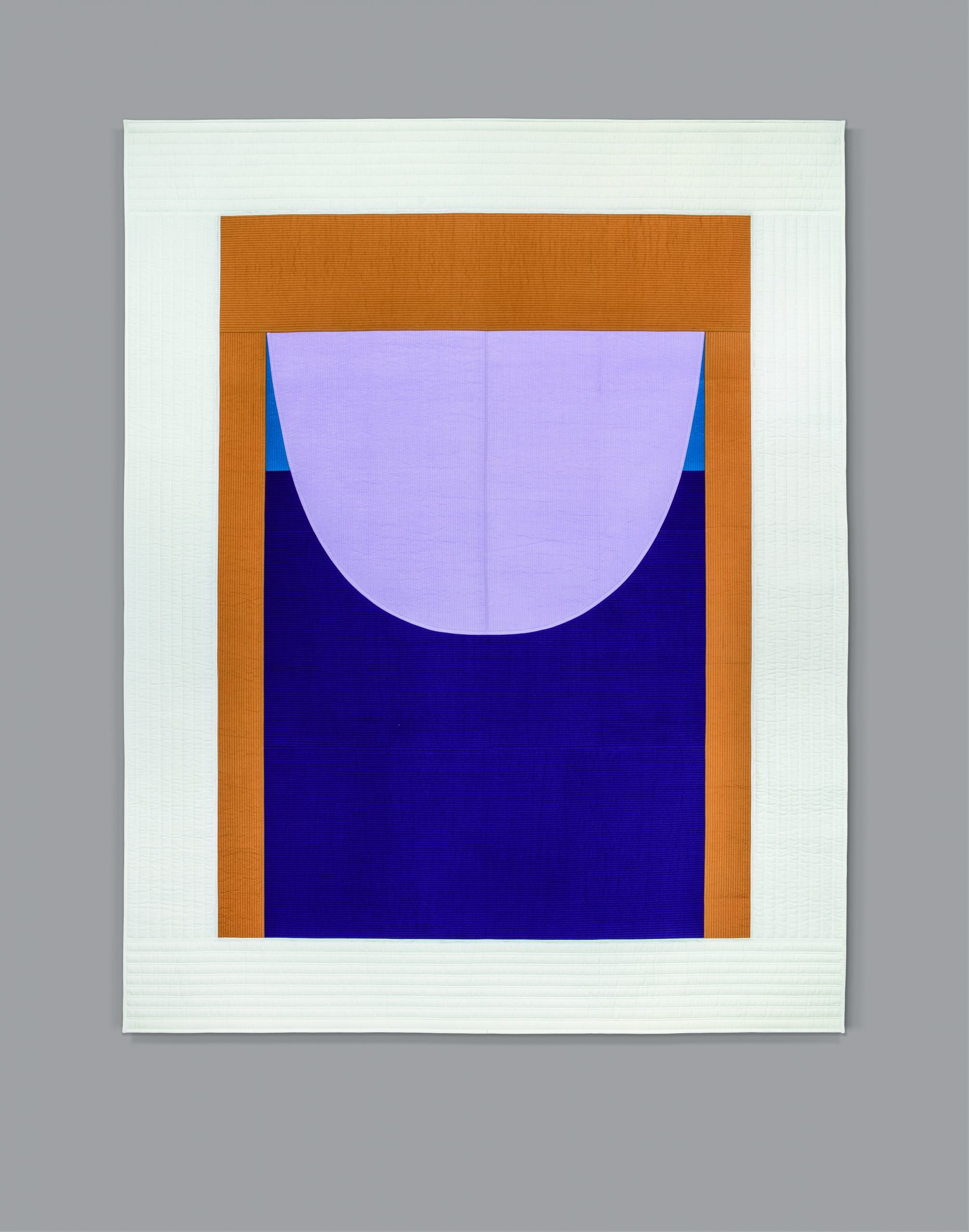
© » KADIST
Seulgi Lee
The Korean title for U: Repair the cowshed after losing the cow = Too late is —a famous Korean proverb meaning “you are doing something when you are already late to do it”. This work by Seulgi Lee is a nubi (traditional Korean quilt) blanket project that shows Korean proverbs expressed as geometric shapes. Nubi blankets were used as single sheet summer blankets in Korean households until the 1980s.

© » KADIST
James T. Hong
Lessons of the Blood by James T. Hong pieces together interviews, extensive archival and field research, and TV footage addressing Japan’s use of biological warfare and experimentation on Chinese prisoners during World War II, as well as the revisionism of the Japanese government and Chinese survivors’ attempts to live with this horrific history and to find justice. Co-written, directed, edited and produced with Yin-Ju Chen, whose work is also represented in the Kadist collection, Lessons of the Blood is a meditation on propaganda, the ways in which national mythologies can literally infect and poison the most vulnerable among us, and the legacy of World War II in China, presented through the testimonies of survivors, academics, medical experts, nationalists and activists. The film locates its genesis in the publication of the New History Textbook in Japan in 2000, which infamously glossed over the Japanese Empire’s wartime atrocities, sparking rage and violent protests in China and South Korea in 2005.

© » KADIST
Leung Chi Wo and Wong Sara
Photojournalist with Two Cameras restages a portrait of a photojournalist from the background of an old photograph of protest published in South China Morning Post on January 10, 2010 under the headline “Return of the Radicals: Recent angry protests are nothing new.” The photojournalist in the photograph, probably from a protest of earlier decades, was capturing the scene of a protester’s arrest while wearing two cameras. January of 2010 was a time of pro-Democracy demonstrators called for the release of activist Liu Xiaobo, drafter of the Charter 08 manifesto calling for the end of authoritarian rule, was sentenced to 11 years in prison one month earlier. Leung’s isolating and highlighting of the photographer by bringing him from the original photograph’s background to the foreground of his studio shot calls attention to the two older cameras and the journalist’s retro-style clothing.

© » KADIST
Wang Tuo
Wailing Requiem is the fourth and final chapter of The Northeast Tetralogy , a film project that Wang Tuo began in 2017. The project is a unique regional research of Northeastern China that addresses the region’s geopolitical contentions. Drawing on significant moments from China’s modern history, Wang’s visual storytelling sets up and displaces a series of socio-historical situations through multiple narrative structures.
Wong Wai Yin
Wong Wai Yin is an interdisciplinary artist who experiments with a variety of media ranging from painting, sculpture, collage, performance, video, installations and photography...
Yin-Ju Chen
- year born: 2011
- gender: female
- nationality: American & Taiwanese
Liu Yu
Liu Yu has developed a multifaceted artistic practice that takes field documentation as its point of departure...
Seulgi Lee
Seulgi Lee’s artistic references range from anthropological materials, archetypical linguistic elements, vernacular culture, handcrafts tradition, to the graphic culture of animistic belief found in diverse locals around the world...
Liu Yujia
Artist Liu Yujia’s practice revolves mainly around video and photography...
Leung Chi Wo and Wong Sara
Leung Chi Wo tends to highlight in his art the boundaries between viewing and voyeurism, real and fictional, and art and the everyday...
Liu Ding
Liu Ding is an artist and a curator whose artistic and curatorial practice focuses on multiple viewpoints and modes of description, exploring a trajectory of discursive thoughts that connect the historical and the contemporary...
Liu Chuang
Known for engaging socio-economic matters as they relate to urban realities, Liu Chuang proposes different understandings of social systems underlying the everyday...
Wang Tuo
Through film, performance, painting, and drawing, artist Wang Tuo interweaves disparate realities through archives, modern history, myth, and literature...
Xin Liu
Xin Liu’s work revolves around various ways of experiencing distance, and exploring the tension between personal experience and technological society...
James T. Hong
James T...

© » TWOCOATSOFPAINT
about 20 months ago (02/07/2024)
Elizabeth Hazan: Playful visionary – Two Coats of Paint Elizabeth Hazan, Glade, 2022, oil on linen, 66 x 55 inches Contributed by Patrick Neal / Elizabeth Hazan’s exhilarating oil paintings, on view at Hesse Flatow gallery in Chelsea, marry old-school color field abstraction and loopy, gestural shorthand...

© » FAD MAGAZINE
about 21 months ago (02/01/2024)
Tate Modern announce new partnership with Asymmetry Art Foundation - FAD Magazine Skip to content By Mark Westall • 1 February 2024 Share — Tate Modern © Tate Photography Tate Modern has announced today a new partnership with Asymmetry Art Foundation enabling Alvin Li to be appointed to the role of Curator, International Art and Hera Chan to be appointed Adjunct Curator, Asia-Pacific ...

© » SLASH PARIS
about 21 months ago (01/29/2024)
Whitney Biennial 2024 — Even Better Than the Real Thing — Divers lieux — Exposition — Slash Paris Connexion Newsletter Twitter Facebook Whitney Biennial 2024 — Even Better Than the Real Thing — Divers lieux — Exposition — Slash Paris Français English Accueil Événements Artistes Lieux Magazine Vidéos Retour Précédent Suivant Whitney Biennial 2024 — Even Better Than the Real Thing Exposition Techniques mixtes À venir Biennale du Whitney 2024 © Whitney Biennial Whitney Biennial 2024 Even Better Than the Real Thing Dans environ un mois : 20 mars → 28 avril 2024 Soixante-et-onze artistes et collectifs participent à la 81e édition de la Biennale de Whitney, qui ouvre ses portes le 20 mars 2024...
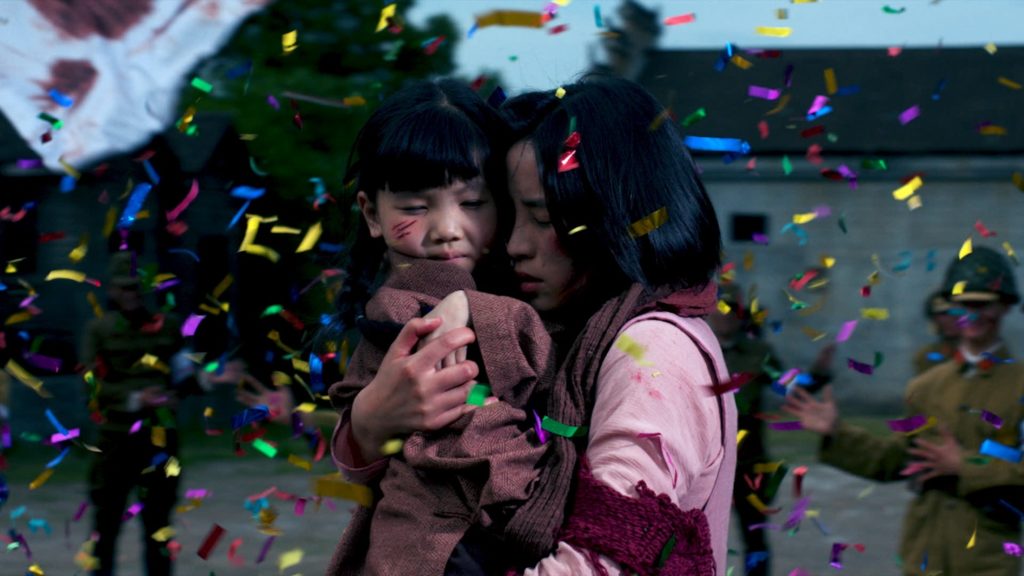
© » FLASH ART
about 21 months ago (01/29/2024)
Whitney Museum announces the artists participating in Whitney Biennial 2024: "Even Better Than the Real Thing" | | Flash Art Flash Art uses cookies strictly necessary for the proper functioning of the website, for its legitimate interest to enhance your online experience and to enable or facilitate communication by electronic means...

© » SLASH PARIS
about 21 months ago (01/29/2024)
Whitney Biennial 2024 — Even Better Than the Real Thing — Divers lieux — Exhibition — Slash Paris Login Newsletter Twitter Facebook Whitney Biennial 2024 — Even Better Than the Real Thing — Divers lieux — Exhibition — Slash Paris English Français Home Events Artists Venues Magazine Videos Back Previous Next Whitney Biennial 2024 — Even Better Than the Real Thing Exhibition Mixed media Upcoming Biennale du Whitney 2024 © Whitney Biennial Whitney Biennial 2024 Even Better Than the Real Thing In about 1 month: March 20 → April 28, 2024 Seventy-one visionary artists and collectives will participate in the eighty-first installment of the Whitney Biennial, opening March 20, 2024...
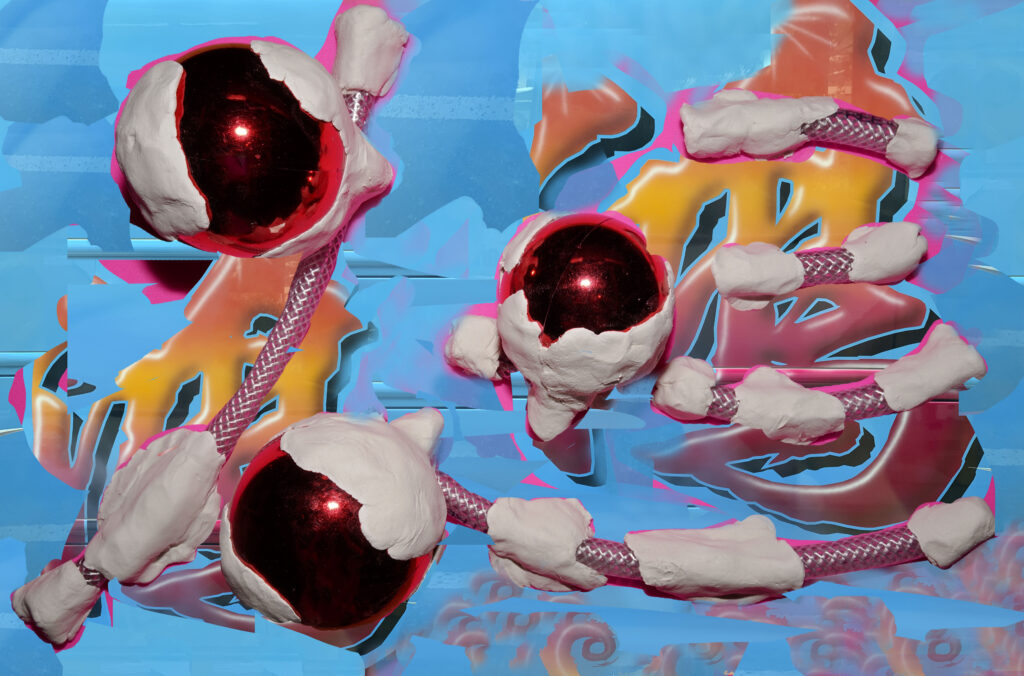
© » 1854 PHOTOGRAPHY
about 22 months ago (12/18/2023)
The Jimei × Arles festival is a feast – will it boost Chinese photography for good? - 1854 Photography Subscribe latest Agenda Bookshelf Projects Industry Insights magazine Explore ANY ANSWERS FINE ART IN THE STUDIO PARENTHOOD ART & ACTIVISM FOR THE RECORD LANDSCAPE PICTURE THIS CREATIVE BRIEF GENDER & SEXUALITY MIXED MEDIA POWER & EMPOWERMENT DOCUMENTARY HOME & BELONGING ON LOCATION PORTRAITURE DECADE OF CHANGE HUMANITY & TECHNOLOGY OPINION THEN & NOW Explore Stories latest agenda bookshelf projects theme in focus industry insights magazine ANY ANSWERS FINE ART IN THE STUDIO PARENTHOOD ART & ACTIVISM FOR THE RECORD LANDSCAPE PICTURE THIS CREATIVE BRIEF GENDER & SEXUALITY MIXED MEDIA POWER & EMPOWERMENT DOCUMENTARY HOME & BELONGING ON LOCATION PORTRAITURE DECADE OF CHANGE HUMANITY & TECHNOLOGY OPINION THEN & NOW Operating room party (Grand), 2022, from the series Baby’s Baby © Wu MeiChi Now in its ninth year, the festival brings works from Les Rencontres d’Arles alongside its own cutting-edge programme...

© » AESTHETICA
about 22 months ago (12/16/2023)
Aesthetica Magazine - Aesthetica Art Prize: Playing with Light Aesthetica Art Prize: Playing with Light In 1960s Los Angeles, members of the Light and Space movement – James Turrell, Mary Corse, Larry Bell, Helen Pashgian – were experimenting with how geometric space and radiant light could impact human perception...

© » FLASH ART
about 22 months ago (12/14/2023)
Liu Chuang "Lithium Lake and Island of Polyphony" Antenna Space / Shanghai | | Flash Art Flash Art uses cookies strictly necessary for the proper functioning of the website, for its legitimate interest to enhance your online experience and to enable or facilitate communication by electronic means...

© » BOMB
about 25 months ago (09/11/2023)
BOMB Magazine | Jenna Sutela Interviewed Necessary (Required) Cookies that the site cannot function properly without...

© » ARTS EQUATOR
about 35 months ago (11/16/2022)
Chair Stories | ArtsEquator Skip to content In this visual essay, puppet maker and designer Daniel Sim, begins with a set of rejected stage chairs, and ends up on a lyrical journey through Singapore's theatre history...
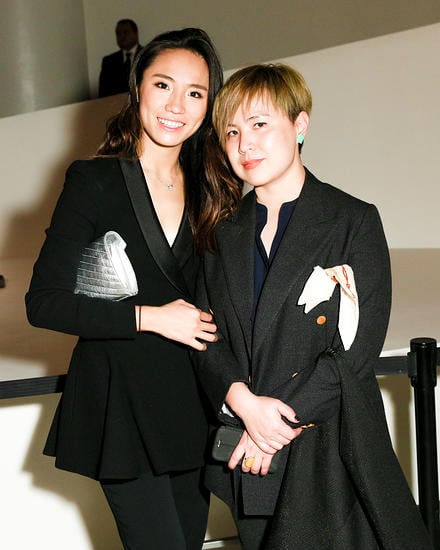
© » LARRY'S LIST
about 37 months ago (10/05/2022)
Artist and Collector Linyao Kiki Liu on How Her International Upbringing Informed Her Career - via artnet news...
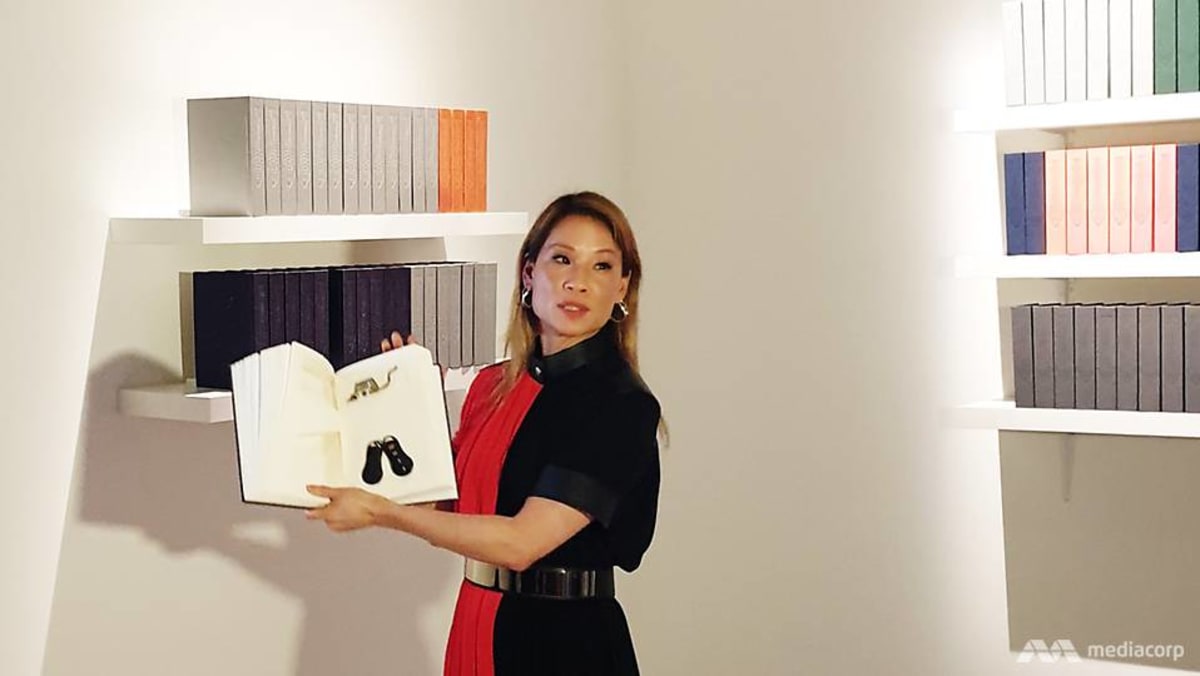
© » LARRY'S LIST
about 37 months ago (10/05/2022)
The American actress shows off her artistic side in a joint exhibit at the National Museum of Singapore with Singaporean artist Shubigi Rao....

© » LARRY'S LIST
about 37 months ago (10/05/2022)
Taiwanese Mega-Collector Pierre Chen Wants to Open a Private Museum in the Mountains Outside Taipei - via artnet news...

© » LARRY'S LIST
about 37 months ago (10/05/2022)
The collection, which includes works by Zhang Xiaogang, Fang Lijun, and Liu Wei are part of an upcoming private sale at Sotheby’s Hong Kong auctions....

© » ARTS EQUATOR
about 50 months ago (09/07/2021)
10 Things You Should Know About: Malay Dance | ArtsEquator Thinking and Talking about Arts and Culture in Southeast Asia ArtsEquator Viewpoints September 7, 2021 10 Things You Should Know is a series of short animated videos on aspects of Malay culture and heritage, made in partnership with Wisma Geylang Serai...
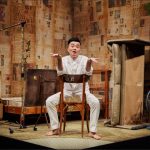
© » ARTS EQUATOR
about 56 months ago (03/04/2021)
Citizen X marks the spot for a family treasure none of us can find | ArtsEquator Thinking and Talking about Arts and Culture in Southeast Asia ArtsEquator Viewpoints Courtesy of The Finger Players March 4, 2021 By Corrie Tan (2,050 words, 10-minute read) Over the course of Citizen X , my father nudges me in the arm several times, whispering loudly and theatrically: “ It’s so similar leh!” All throughout the 75 minutes, he wiggles around in his seat, emitting sighs, laughter, tsk-tsks , and the occasional “wow”...

© » ARTS EQUATOR
about 60 months ago (11/16/2020)
(Episode 1) What's in a Scene - 《大狗民》Citizen Dog by The Finger Players | ArtsEquator Skip to content In this episode, Liu Xiaoyi and Oliver Chong unpack a scene from The Finger Players 十指帮 ‘s 《大狗民》Citizen Dog and talk about the set design, costume design and more...

© » ARTS EQUATOR
about 72 months ago (11/21/2019)
Weekly Southeast Asia Radar: The animated short 'Batik Girl'; Manila's "casserole pot" | ArtsEquator Thinking and Talking about Arts and Culture in Southeast Asia ArtsEquator Radar Batik Girl FB November 21, 2019 ArtsEquator’s Southeast Asia Radar features articles and posts about arts and culture in Southeast Asia, drawn from local and regional websites and publications – aggregated content from outside sources, so we are exposed to a multitude of voices in the region...

© » ARTS EQUATOR
about 76 months ago (07/24/2019)
Hitting the right (heart) notes: 10toONE by ONE Chamber Choir | ArtsEquator Thinking and Talking about Arts and Culture in Southeast Asia Articles Tan Zexun / Pandawithacamera July 24, 2019 By Shahril Salleh (932 words, 5-minute read) ONE chamber choir has a formidable reputation...

© » ARTS EQUATOR
about 79 months ago (04/08/2019)
Cloud Gate Dance Theatre of Taiwan: Between East and West, Heaven and Earth | ArtsEquator Thinking and Talking about Arts and Culture in Southeast Asia Articles Liu Chen-hsiang April 8, 2019 By Stephanie Burridge (800 words, four-minute read) Sustainability, remaining fresh and engaging is challenging in the present day, content-saturated global world...

© » ARTS EQUATOR
about 80 months ago (03/26/2019)
Podcast 54: "FOUR FOUR EIGHT" by Emergency Stairs | ArtsEquator Thinking and Talking about Arts and Culture in Southeast Asia ArtsEquator Viewpoints Crispian Chan March 27, 2019 Duration: 41 min As part of ArtsEquator’s Critics Reading Group programme, we got together three arts writers – Corrie Tan, Jocelyn Chng and Loo Zihan – to discuss FOUR FOUR EIGHT by Emergency Stairs ...

© » ARTS EQUATOR
about 82 months ago (01/02/2019)
Radical theatre of the difabled (via Inside Indonesia) | ArtsEquator Thinking and Talking about Arts and Culture in Southeast Asia ArtsEquator Radar January 2, 2019 Theatre is the art of looking at ourselves (Augusto Boal, founder, Theatre of the Oppressed) The performance took place on a makeshift open-air stage using only simple props, under the roof of a traditional Javanese theatre...
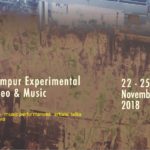
© » ARTS EQUATOR
about 84 months ago (11/19/2018)
Weekly Picks: Malaysia (19–25 Nov 2018) | ArtsEquator Thinking and Talking about Arts and Culture in Southeast Asia Weekly To Do November 19, 2018 KLEX 2018: Translucence , at various locations, 22–25 Nov An independent artist-run grassroots international festival of experimental film, video art and music...

© » ARTS EQUATOR
about 86 months ago (09/05/2018)
Podcast 46: M1 Contact Contemporary Dance Festival 2018 | ArtsEquator Thinking and Talking about Arts and Culture in Southeast Asia ArtsEquator Viewpoints September 5, 2018 Duration: 25 mins Chloe C...

© » ARTS EQUATOR
about 89 months ago (06/27/2018)
M1 Open Stage + DiverCity - Contact Contemporary Dance Festival Thinking and Talking about Arts and Culture in Southeast Asia Articles June 27, 2018 This year, with an increased number of international programme collaborators, M1 Open Stage features innovative and exhilarating works by a diverse range of dance artists over two nights...
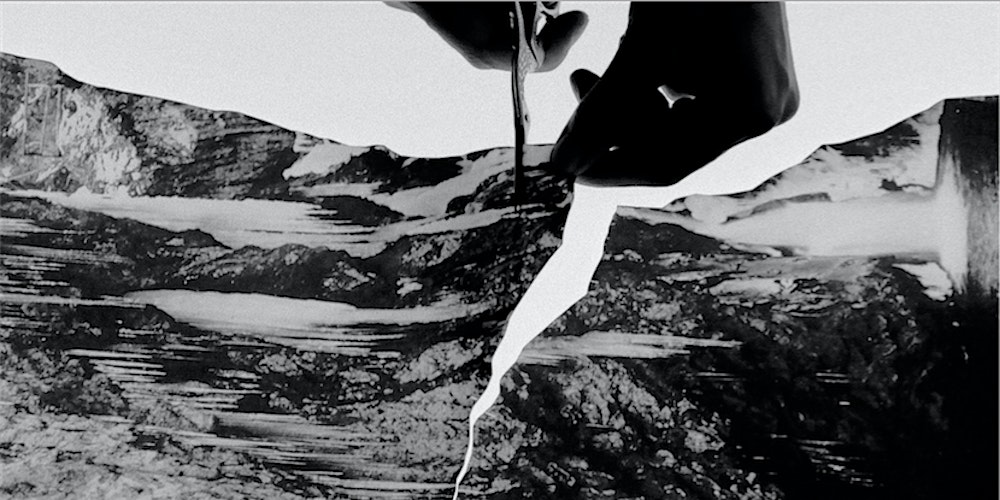
© » ACAW
about 99 months ago (08/17/2017)
Saturday, October 14th, at Asia Society Museum- Sunday, October 15th at SVA Theatre Thanks for your interest in registering for FIELD MEETING Take 5: Thinking Projects, an exclusive two-day forum for arts professionals (curators, scholars, museum directors, artists, students & members of the press), with limited seating open to the general public...

© » ARTNEWS CN
about 141 months ago (03/03/2014)
Invisible Ink – ARTnews.com Skip to main content By Richard Vine Plus Icon Richard Vine Managing Editor, Art in America View All March 3, 2014 2:10am View Gallery 6 Images “ Ink Art: Past as Present in Contemporary China ,” now at New York’s Metropolitan Museum of Art , seems at first to be a long-awaited corrective to Western myopia in regard to Chinese ink painting and calligraphy...

© » ARTNEWS CN
about 141 months ago (02/26/2014)
Liu Wei: China’s Trickster Mixer-Upper – ARTnews.com Skip to main content By Barbara Pollack Plus Icon Barbara Pollack View All February 26, 2014 5:00am When the Rubell Family Collection opened its doors with an exhibition of 28 Chinese artists in time for Art Basel Miami Beach last December, one of the stars that emerged from the show was Liu Wei , whose brand of geometric abstraction surprised many Americans looking for more stereotypical hallmarks of Chinese art ...

© » ARTNEWS CN
about 171 months ago (10/06/2011)
CHINA The Next Generation – ARTnews.com Skip to main content By Barbara Pollack Plus Icon Barbara Pollack View All October 6, 2011 10:00am Animal Regulation No...
-
2000-2009
Wong Wai Yin
2008In this work the artist stages a humorously violent “intervention” against male-dominated cultures of art production in present-day China...
-
2010-2019
Leung Chi Wo and Wong Sara
2010Photojournalist with Two Cameras restages a portrait of a photojournalist from the background of an old photograph of protest published in South China Morning Post on January 10, 2010 under the headline “Return of the Radicals: Recent angry protests are nothing new.” The photojournalist in the photograph, probably from a protest of earlier decades, was capturing the scene of a protester’s arrest while wearing two cameras...
Yin-Ju Chen
Drawing & Print
2011(Drawing & Print) This work includes sketches for Extrastellar Evaluations , the project she produced at Kadist...
Liu Chuang
2014Categorized as low-level literature, a “Love Stories” book is a romantic popular fiction of proletariat China, read mainly by teenagers, students, and young workers...
Yin-Ju Chen
2016Through a semi-fictional approach, Extrastellar Evaluations envisions a version of history in which alien inhabitants, the Lemurians, lived among humans under the guise of various renowned conceptual and minimal artists in the 1960s (Carl Andre, Mel Bochner, and James Turrell to name a few)...
Yin-Ju Chen
2018Extrastellar Evaluations is a multimedia installation produced during Yin-Ju Chen’s residency at Kadist San Francisco in the spring of 2016...
Seulgi Lee
2018The Korean title for U: Repair the cowshed after losing the cow = Too late is —a famous Korean proverb meaning “you are doing something when you are already late to do it”...
-
2020-2029
Wong Wai Yin
2021Drawn from the widely circulated images of protests around the world in support of women rights and racial equality, the phrase I can’t believe we are still protesting is both the title of Wong Wai Yin’s photographic series and a reference to similar messages seen on protest signages...
Wong Wai Yin
2021Drawn from the widely circulated images of protests around the world in support of women rights and racial equality, the phrase I can’t believe we are still protesting is both the title of Wong Wai Yin’s photographic series and a reference to similar messages seen on protest signages...
Wong Wai Yin
2021Drawn from the widely circulated images of protests around the world in support of women rights and racial equality, the phrase I can’t believe we are still protesting is both the title of Wong Wai Yin’s photographic series and a reference to similar messages seen on protest signages...
Wong Wai Yin
2021Drawn from the widely circulated images of protests around the world in support of women rights and racial equality, the phrase I can’t believe we are still protesting is both the title of Wong Wai Yin’s photographic series and a reference to similar messages seen on protest signages...

